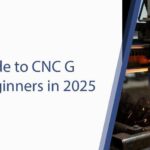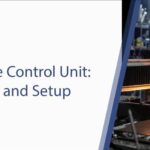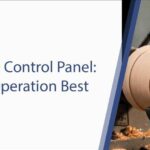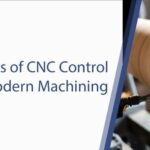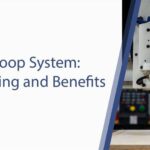Stand-alone CNC controllers: Versatile, Compact Power for Precision Machining
Stand‑alone CNC controllers have become essential for shops that need dependable accuracy, quick setup, and low total cost of ownership.
Unlike multi‑box or PC‑dependent architectures, these compact, self‑contained units combine compute, display, I/O, and motion control in a single package.
The result is a durable, easy‑to‑deploy control that fits lathes, mills, routers, plasma/waterjet tables, and specialty machines—without the overhead of a full PC stack.
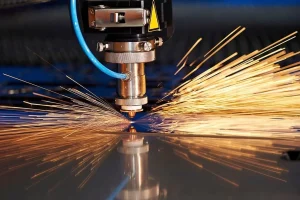
What Is a Stand‑Alone CNC Controller?
A stand‑alone controller is an embedded, industrial device that runs the CNC kernel, HMI, and real‑time motion in one enclosure. It typically includes:
- Integrated HMI: Built‑in display with hard keys or touchscreen.
- Embedded CPU/RTOS: Deterministic motion control without relying on Windows updates or external PCs.
- I/O & Fieldbus: Digital/analog I/O, encoder inputs, and support for protocols like Modbus, CANopen, or EtherCAT (model‑dependent).
- Storage & Ports: Onboard memory/SD, USB/Ethernet for program transfer and backups.
This all‑in‑one design cuts install time, reduces cabling, and improves reliability in harsh environments.
Why They Matter in Today’s Manufacturing
Manufacturers are under pressure to deliver more, faster, and at lower cost. Stand‑alone controllers help by:
- Accelerating deployment: Minimal components and wiring simplify retrofits and new builds.
- Standardizing workflows: Same interface across different machines reduces training time.
- Improving uptime: Embedded RTOS and fanless designs resist shop‑floor dust, vibration, and temperature swings.
- Lowering TCO: Fewer parts to buy, patch, and maintain.
Key Advantages of Stand‑Alone CNC Controllers
All‑in‑One Convenience
Controller, HMI, and motion kernel are unified, reducing panel space and eliminating the need for external PCs. That means cleaner installations, fewer failure points, and quicker commissioning.
Broad Machine Compatibility
One controller can drive routers, mills, lathes, plasma/waterjet, and pick‑and‑place systems. Parameter sets, kinematics tables, and post files let you adapt quickly between platforms—ideal for mixed‑machine job shops.
User‑Friendly Programming Interfaces
Conversational cycles, canned drilling/milling, and on‑screen wizards enable fast setup for new or less‑experienced operators, while G/M code support and macro variables satisfy expert users. Shortcuts, soft keys, and context help reduce keystrokes.
Real‑Time Monitoring & Precision Control
Built‑in DROs, spindle/axis load bars, and live toolpath previews help catch problems early. Advanced look‑ahead, S‑curve acceleration, and backlash/thermal compensation maintain accuracy on long runs and complex contours.
Cost‑Effective for SMEs
For small and medium‑sized manufacturers, stand‑alone controllers provide industrial‑grade capability without the price and maintenance of full PC architectures. One model can standardize multiple machines, simplifying spares and support.
Typical Architecture & Features
- Motion & Interpolation: 3–5 axis standard (expandable on some models), helical and polar interpolation, rigid tapping.
- Probing & Measurement: Part and tool probing cycles, in‑process measurement, and auto‑offset updates.
- Safety & I/O: E‑stop, guard interlocks, light curtains; configurable digital/analog I/O for auxiliaries (coolant, mist, ATC).
- Program Handling: USB/Ethernet transfer, DNC drip‑feed, onboard storage, job queuing.
- Maintenance Tools: Alarm history, diagnostics pages, ladder/PLC viewer (where applicable), backup/restore wizards.
Practical Use Cases
- Woodworking & Stone: Nested toolpaths and long runs benefit from durable HMIs and dust/slurry‑resistant enclosures.
- Metalworking Job Shops: Quick changeovers, probing routines, and stable circular/3D interpolation for short‑lot work.
- Plasma/Waterjet: Smooth contouring with kerf compensation and height control (THC integration on supported models).
- Education & Labs: Low‑maintenance controllers with safe, guided interfaces for training and prototyping.
Selection Checklist (What to Look For)
- Axes & Kinematics: Required simultaneous axes, rotary needs, and potential future expansion.
- I/O & Fieldbus: Enough digital/analog I/O; support for your drives (step/dir, analog velocity, or EtherCAT/CANopen).
- Look‑Ahead & Dynamics: Path planning depth, jerk limits, S‑curve profiles for surface finish and accuracy.
- Probing & Macros: Native probing cycles, macro B support, and parametric programming.
- HMI Ergonomics: Screen size, touchscreen vs. keys, shortcut keys for high‑frequency actions.
- Program Handling: USB/Ethernet, DNC, job management; easy backup/restore.
- Environmental Ratings: Vibration tolerance, IP rating, fanless cooling.
- Support & Documentation: Local partner availability, manuals, training, and firmware roadmap.
Integration & Connectivity
Even without a PC, stand‑alone controllers can connect smartly:
- Program/Data Flow: USB for programs and logs; Ethernet for shared folders or DNC.
- Basic Telemetry: Export cycle times, alarm logs, and part counts for KPI tracking.
- Upstream Systems: Light integrations to MES/ERP via CSV/JSON, FTP, or vendor utilities (model‑specific).
Security & Reliability Best Practices
- Use role‑based logins to prevent unauthorized edits.
- Keep firmware current; apply vendor patches on a defined cadence.
- Maintain golden image backups for rapid recovery.
- Segment the machine network (VLAN/DMZ) to limit exposure, even for basic Ethernet features.
Cost and ROI Considerations
Upfront costs are lower than full PC‑based platforms, but the bigger win is operational:
- Faster installs and retrofits
- Less downtime from OS/driver conflicts
- Simplified training and cross‑machine standardization
- Reduced spare‑parts inventory
When one controller family runs multiple machines, support and documentation unify—boosting uptime and throughput.
Implementation Roadmap
- Assess & Scope: Confirm axis count, I/O needs, drives compatibility, and environmental constraints.
- Pilot Machine: Install on the most representative machine; validate interpolation quality and probing.
- Standardize: Lock in parameter templates, post processors, and HMI layouts; write quick‑start SOPs.
- Rollout: Retrofit additional machines; train operators and maintenance with hands‑on sessions.
- Optimize: Add probing cycles, refine tool libraries, and tune dynamics for finish vs. throughput.
When to Choose Stand‑Alone vs. PC‑Based
Choose stand‑alone when you prioritize simplicity, fast deployment, and low maintenance. Choose PC‑based when you need deep CAD/CAM integration, advanced analytics, or heavy customization. Many factories run a hybrid strategy: stand‑alone for standardized equipment and PC‑based for complex, high‑mix cells.
Radonix Expertise in CNC Control
With 16+ years of CNC controller design, Radonix delivers stand‑alone and PC‑based systems that balance reliability with performance. Our compact controls feature intuitive HMIs, robust I/O, probing libraries, and retrofit‑friendly wiring—ideal for SMEs and mixed‑machine shops seeking consistent accuracy and lower TCO.
Contact
📧 info@radonix.com
📞 +90 553 920 5500
Conclusion
Stand‑alone CNC controllers provide a streamlined path to precision: compact hardware, intuitive programming, reliable motion, and broad machine compatibility.
For manufacturers seeking faster installs, easier training, and consistent results across diverse equipment, a stand‑alone control is a practical, future‑ready choice—especially when paired with Radonix’s proven industrial expertise.


